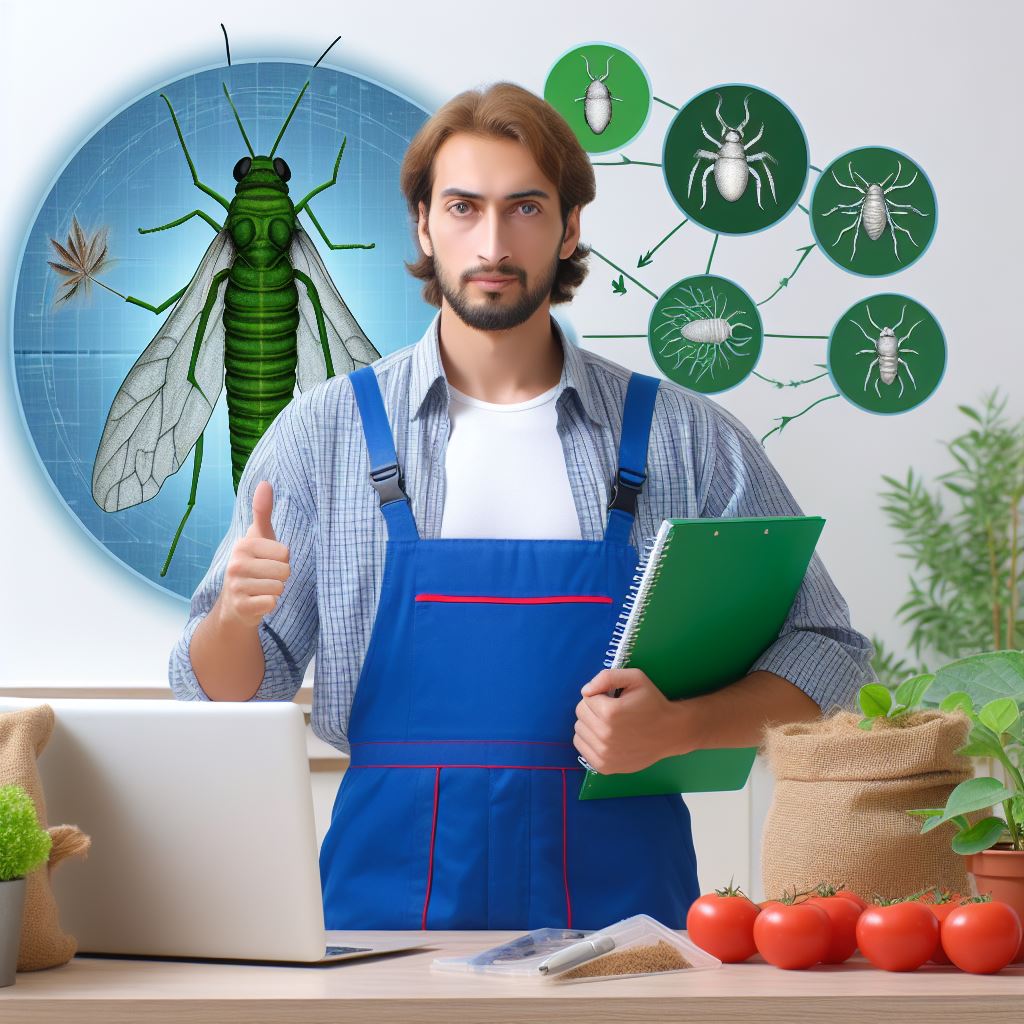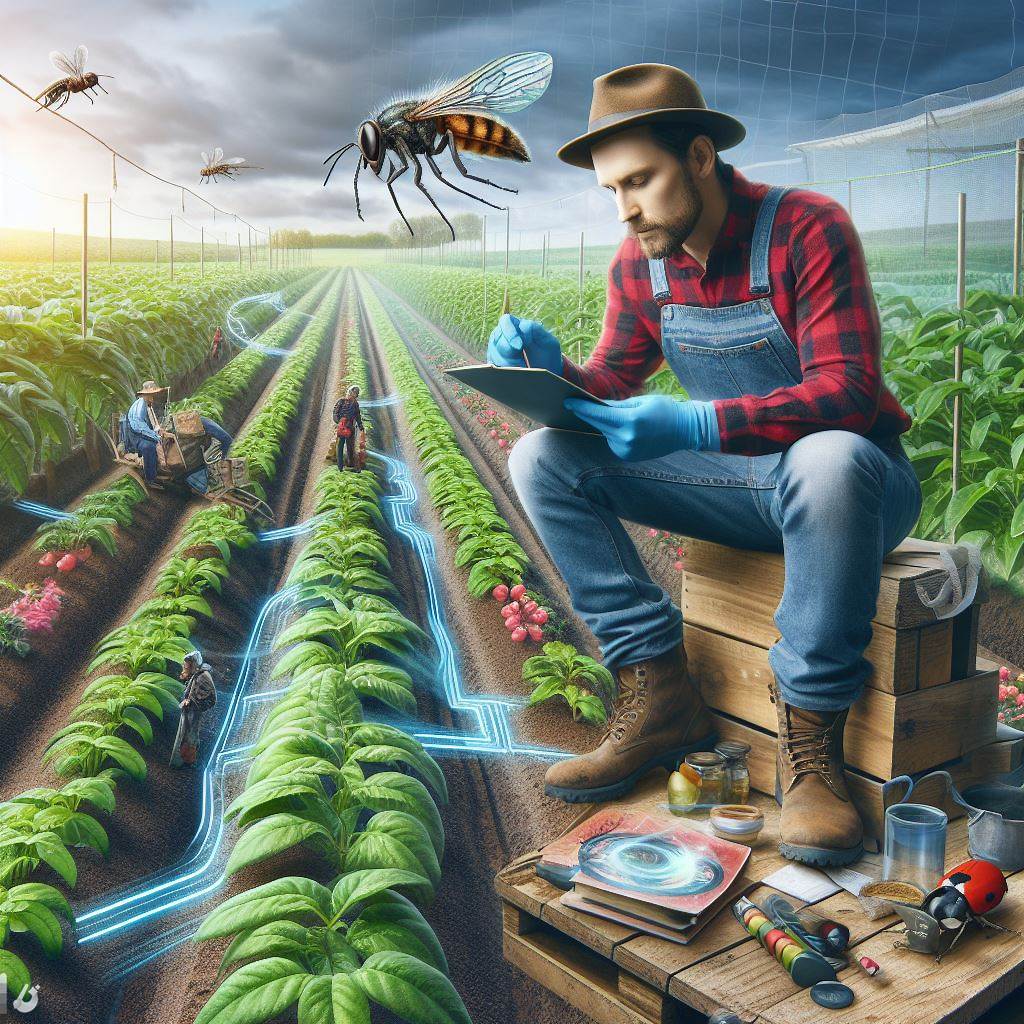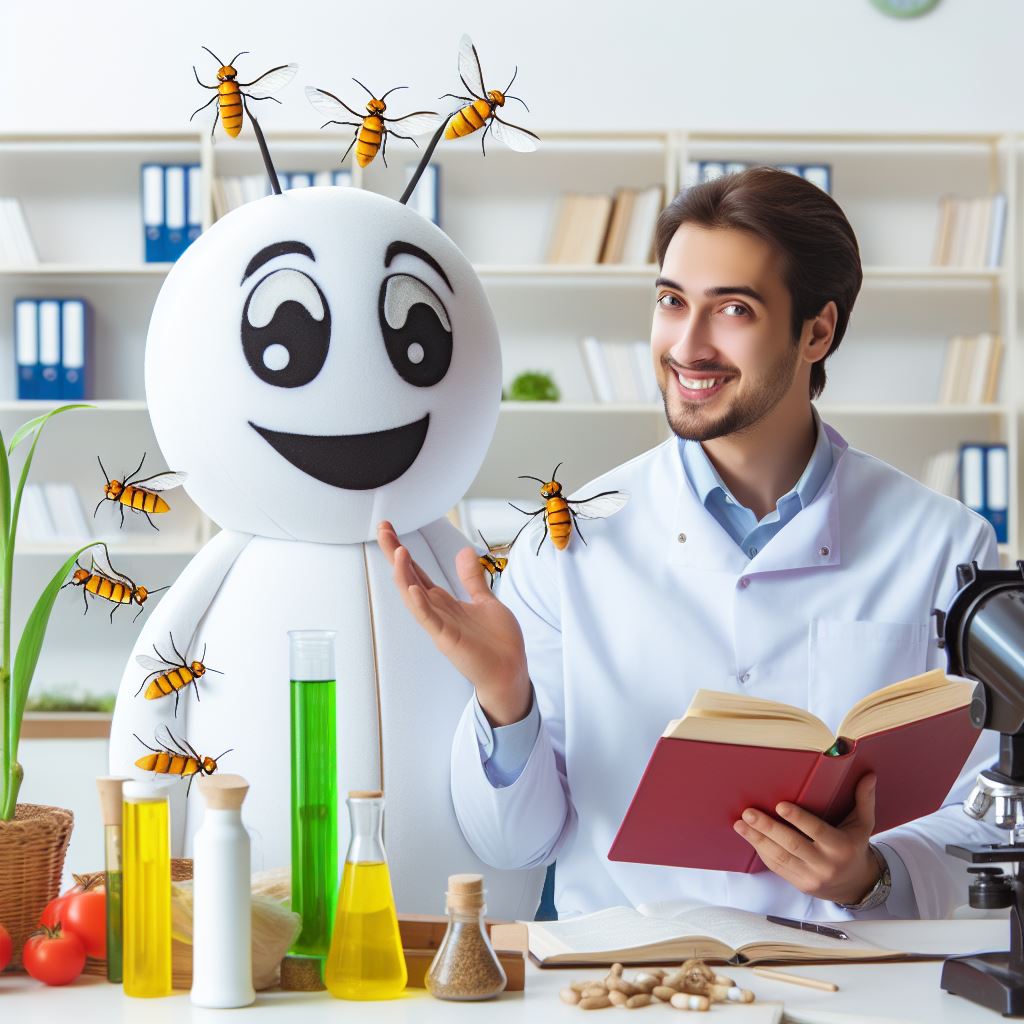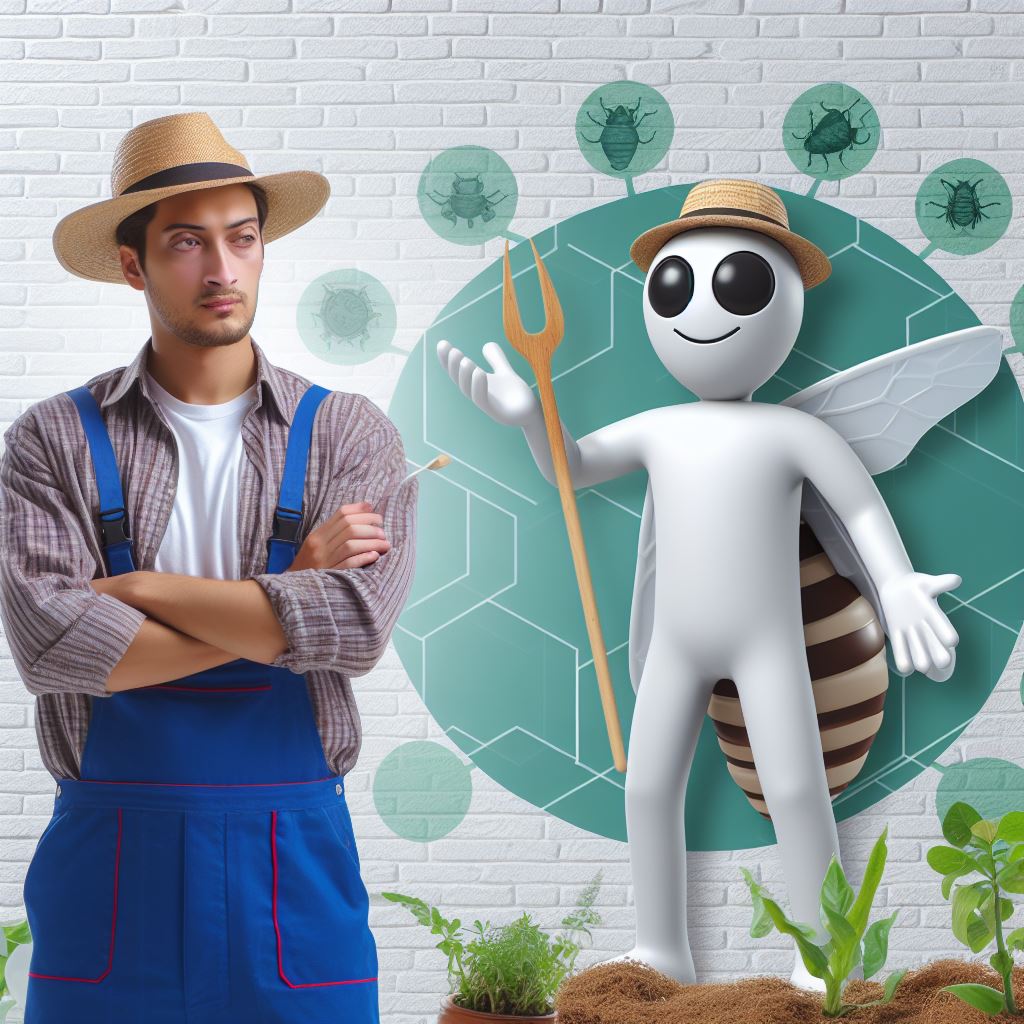Introduction
Integrated Pest Management (IPM) is a method of pest control that focuses on long-term sustainability in farming practices.
Implementing IPM is crucial in maintaining a healthy environment and ensuring sustainable farming practices.
Natural predators play a key role in IPM by effectively controlling pest populations.
Natural predators serve as crucial allies in IPM by controlling pest populations, reducing the use of harmful pesticides, and promoting a balanced ecosystem.
In the complex tapestry of agroecosystems, the harmonious collaboration between farmers and natural predators becomes a cornerstone in achieving sustainable and eco-friendly agriculture.
Integrated Pest Management (IPM) embraces this synergy, recognizing natural predators as dynamic players in maintaining a delicate equilibrium.
As we embark on this exploration, we’ll navigate the intricate interplay between pests and their natural adversaries, shedding light on the multifaceted strategies employed by these allies.
From ladybugs patrolling fields to predatory nematodes lurking in the soil, each member of the natural predator ensemble contributes uniquely to the intricate choreography of pest regulation.
Beyond their immediate role in pest control, these allies hold the key to reducing reliance on chemical interventions, fostering biodiversity, and enhancing overall ecosystem resilience.
By understanding and fostering this alliance, farmers not only protect their crops but also cultivate a sustainable and regenerative environment.
Join us on this enlightening journey as we uncover the depth and significance of natural predators within the realm of IPM, unraveling the layers of complexity that make them indispensable partners in the pursuit of a balanced and thriving agricultural landscape.
The significance of natural predators in IPM
When it comes to pest control, natural predators play a crucial role in Integrated Pest Management (IPM).
They contribute to pest control in several ways, primarily by naturally regulating pest populations.
This brings numerous advantages over relying solely on chemical pesticides.
How natural predators contribute to pest control
- Natural predators are organisms that feed on pests, such as insects, rodents, or even other predators.
- By hunting and consuming pests, they directly reduce pest populations, keeping them in check.
- This predator-prey relationship helps maintain ecological balance and prevents pest outbreaks.
Their ability to regulate pest populations naturally
- Natural predators have evolved mechanisms to effectively control pest populations without human intervention.
- They can detect and locate pest habitats, ensuring they remain under control.
- These predators possess adaptations that make them efficient hunters, further enhancing their pest control capabilities.
Advantages of using natural predators instead of relying solely on chemical pesticides
- Environmental preservation: Natural predators provide sustainable and environmentally friendly pest control solutions.
- Reduced chemical exposure: By incorporating natural predators, reliance on chemical pesticides decreases, minimizing chemical exposure for humans and wildlife.
- Cost-effective: Utilizing natural predators as pest control agents can be cost-effective in the long run, as it reduces the need for expensive chemical treatments.
- Resistance management: Pests can develop resistance to chemical pesticides over time, but they struggle to adapt to natural predator predation.
- Preserves beneficial insects: Unlike chemical pesticides, natural predators often target specific pests, sparing beneficial insects that play important ecological roles.
- Enhances biodiversity: By promoting the presence of natural predators, IPM helps maintain biodiversity in agricultural and natural ecosystems.
- Long-term effectiveness: Chemical pesticides may provide short-term relief, but their efficacy diminishes over time. Natural predators offer a sustainable long-term solution.
In short, natural predators are vital allies in IPM. Their active role in pest control, ability to regulate pest populations naturally, and the advantages they provide over chemical pesticides highlight their significance.
Transform Your Agribusiness
Unlock your farm's potential with expert advice tailored to your needs. Get actionable steps that drive real results.
Get StartedIncorporating natural predators not only ensures effective pest management but also promotes environmental sustainability and biodiversity.
Balancing the use of both natural predators and chemical pesticides can lead to a more ecologically sound and sustainable approach to pest control.
Read: IPM: A Farmer Guide to Eco-Farming
Types of natural predators
Different categories of natural predators commonly used in IPM
Integrating natural predators in IPM is a crucial strategy to enhance pest control.
There are various categories of natural predators commonly used, each with unique contributions:
- Insects: Ladybugs and parasitic wasps are valuable predators that feed on pests, such as aphids and caterpillars.
- Birds of prey: Owls and hawks are skilled hunters, targeting rodents and smaller birds that can cause damage to crops.
- Amphibians and reptiles: Frogs, lizards, and snakes are beneficial in controlling pests like insects, rodents, and even small snakes.
- Mammals: Bats and foxes play a significant role in pest management by preying on insects, rodents, and small mammals.
Let’s delve deeper into each group of predators and understand how they contribute to pest control:
Insects
Insects are some of the most commonly found natural predators in IPM programs.
They serve as excellent biological controls as they have a high capacity to reproduce rapidly, occupying diverse habitats, and targeting a wide range of pests.
Ladybugs, also known as lady beetles, are renowned for their voracious appetite for aphids, scale insects, and mites, helping to keep them in check.
Parasitic wasps lay their eggs in the bodies of harmful insects, leading to their eventual demise.
Birds of prey
Owls and hawks are formidable aerial hunters that contribute substantially to pest control.
They primarily prey on small rodents, such as mice, voles, and rats, which can cause significant damage to agricultural fields.
By keeping the populations of these pests under control, birds of prey help prevent crop losses and reduce the need for chemical pesticides.
Amphibians and reptiles
Amphibians and reptiles play a critical role in maintaining a healthy ecosystem and preventing pest outbreaks.
Frogs and toads feed on insects, including mosquitoes, flies, and beetles. Their feeding habits help control agricultural pests and disease vectors.
Lizards, such as the common green anole, consume small insects, spiders, and even other lizards, providing natural pest control.
Some snake species also contribute to pest management by feeding on rodents and other small mammals that damage crops.
Mammals
Bats and foxes are nocturnal predators that offer effective pest management.
Bats are exceptional insectivores and help control the populations of nocturnal pests like moths, beetles, and mosquitoes.
Some bat species can consume thousands of insects in just one night.
Foxes, on the other hand, prey on small mammals, including rabbits, rodents, and groundhogs, which can cause considerable harm to crops and gardens.
Their presence reduces the need for alternative methods such as trapping or poisoning.
In fact, the integration of natural predators in IPM is an essential aspect of sustainable pest management.
By deploying insects, birds of prey, amphibians, reptiles, and mammals, it is possible to achieve effective and eco-friendly control over pests.
Showcase Your Farming Business
Publish your professional farming services profile on our blog for a one-time fee of $200 and reach a dedicated audience of farmers and agribusiness owners.
Publish Your ProfileImplementing this strategy not only minimizes the use of chemical pesticides but also helps maintain a balanced ecosystem.
Understanding the unique contributions of each group of predators allows us to harness their potential and build a harmonious coexistence between agriculture and nature.
Read: The Role of Biocontrol in IPM Practices
Methods to attract and support natural predators
In fostering a thriving ecosystem within Integrated Pest Management (IPM), the active involvement of natural predators is paramount.
To enhance their presence and efficacy, farmers can employ a variety of techniques that create a welcoming environment for these beneficial allies.
List of techniques farmers can use to attract natural predators
Planting native flowering plants to provide nectar and pollen
- Select native flowering plants: Opt for species indigenous to your region to attract local natural predators.
- Diversify plant types: Choose a variety of flowers to ensure a continuous supply of nectar and pollen.
- Strategic planting: Place flowering plants near crops to create a seamless habitat for predators.
Installing birdhouses, bat boxes, and insect hotels to provide shelter
- Birdhouses for avian allies: Erect birdhouses to entice feathered friends that feast on crop-damaging insects.
- Bat boxes for nocturnal hunters: Encourage bats, voracious insect predators, by providing roosting options.
- Insect hotels for ground troops: Construct shelters to harbor ground-dwelling predators like beetles and spiders.
- Strategic placement: Position these structures strategically around the farm for maximum impact.
Creating water sources like ponds or small pools
- Ponds for amphibious allies: Build ponds to attract frogs and toads, known for consuming various pests.
- Small pools for insectivores: Incorporate small water features to lure insect-eating predators like dragonflies.
- Consistent maintenance: Ensure water sources are well-maintained for sustained attraction of natural predators.
Conserving natural habitats around farms to support predator populations
- Preserve hedgerows and wild areas: Maintain natural habitats to provide sanctuaries for diverse predator populations.
- Minimal pesticide use: Limit chemical interventions to safeguard the delicate balance of the ecosystem.
- Collaborate with local conservation efforts: Engage with community initiatives to protect and expand natural habitats.
By adopting these proactive measures, farmers actively contribute to the flourishing partnership between agriculture and natural predators.
The deliberate integration of native flora, strategically positioned shelters, and water features transforms farms into sanctuaries where predators thrive, offering an effective and sustainable solution to pest control.
This collaborative approach not only safeguards crops but also fosters biodiversity, creating a resilient and balanced agroecosystem where natural predators emerge as steadfast allies in the ongoing battle against pests.
Read: Sustainable Farming: IPM Success Stories

The importance of biodiversity in supporting natural predators
Diverse landscapes: Attracting and sustaining natural predators
- Natural predators are vital for Integrated Pest Management (IPM) as they help control pest populations.
- Diverse landscapes provide a range of habitats that attract and support natural predators.
- Different predators thrive in various landscapes, which increases the overall biodiversity.
- Forested areas, wetlands, and meadows are particularly crucial for hosting diverse predator populations.
- These landscapes offer shelter, breeding grounds, and food sources for predators throughout their life cycle.
- Having a variety of landscapes nearby ensures that different predator species are available to combat pests.
Crop rotation and mixed cropping systems: Enhancing biodiversity
- Crop rotation involves growing different crops in a systematic sequence on the same land.
- Rotating crops disrupts pest life cycles, making it harder for them to establish and spread.
- This practice also prevents the buildup of specific pest populations that target a particular crop.
- In turn, natural predators have a more stable supply of pests to feed on throughout the year.
- Mixed cropping involves growing different crops within the same field simultaneously.
- Mixed cropping systems increase biodiversity as different crops provide habitats and food sources for various predators.
- The diverse plant species attract a wider range of predators, ensuring better pest control.
- The presence of various crops also creates a more complex and balanced ecosystem.
Promoting complex food webs: Benefits in agricultural settings
- Complex food webs consist of multiple interconnected species forming intricate chains of predator-prey relationships.
- Promoting complex food webs helps maintain a more stable ecosystem in agricultural settings.
- Multiple predator species serve as checks and balances, preventing any one pest species from becoming dominant.
- Natural predators feed not only on pests but also on each other, reducing pest populations indirectly.
- This indirect control is often more sustainable and long-lasting compared to chemical pest control methods.
- Complex food webs also improve soil health and nutrient cycling, benefiting crop growth.
- Introducing diverse plant species and providing suitable habitats for predators play a key role in building complex food webs.
Biodiversity is essential for the success of IPM and the effective control of pests in agricultural systems.
Diverse landscapes, crop rotation, and mixed cropping systems all contribute to enhancing biodiversity.
Promoting complex food webs in agricultural settings brings multiple benefits, including sustainable pest control.
Read: IPM Strategies: Safe for Environment
Success stories of natural predators in IPM
In the field of Integrated Pest Management (IPM), there have been several success stories where natural predators have been successfully implemented.
These cases have not only led to a reduction in pesticide use but also improved pest control outcomes.
Examples of farms or regions successfully implementing natural predators in IPM
Let’s take a look at some of these inspiring examples:
Example 1: Smith Farms
Smith Farms, located in the heartland of the United States, has been implementing natural predators as part of their IPM strategy for the past decade.
By introducing ladybugs and lacewings, they have effectively managed pests such as aphids and whiteflies.
The results have been significant. With the help of these natural predators, Smith Farms has reduced their pesticide use by 70%.
Additionally, they have observed a remarkable improvement in pest control outcomes, with fewer instances of crop damage and higher yields.
Moreover, the economic benefits are undeniable. By cutting back on pesticide applications, Smith Farms has saved thousands of dollars in input costs.
Furthermore, the ecological balance on their farm has been restored, with a decrease in chemical residues and better overall biodiversity.
Example 2: Region X
Region X, a farming region in Europe, has embraced natural predators in their IPM approach with remarkable success.
One such case is the implementation of predatory mites to combat spider mites, a notorious pest for fruit orchards.
By strategically releasing these beneficial mites, farmers in Region X have experienced a significant reduction in spider mite populations.
This has led to a 50% decrease in the use of acaricides, the pesticides traditionally used to control spider mites.
The impact on their economy has been substantial. The reduced reliance on acaricides has resulted in cost savings for farmers, contributing to higher profits.
Moreover, the ecological benefits cannot be overlooked, as the use of natural predators has minimized chemical runoff and improved soil health.
Example 3: Green Acres Vineyard
Green Acres Vineyard, located in California, has successfully integrated natural predators in their IPM practices, specifically for controlling grapevine leafhoppers.
They introduced predatory wasps, which proved to be highly efficient in keeping leafhopper populations in check.
The results have been impressive. Green Acres Vineyard has been able to reduce pesticide applications by an astounding 90%.
This reduction has not only saved the vineyard money but has also led to better control of leafhoppers, resulting in healthier grapevines and higher-quality grapes.
The ecological benefits are equally noteworthy. The decrease in pesticide use has prevented chemical residues from entering nearby water bodies, preserving the local ecosystem.
Additionally, the presence of natural predators has enhanced biodiversity within the vineyard.
These success stories demonstrate the immense potential of natural predators in IPM. By harnessing the power of beneficial insects and animals, farmers can reduce their reliance on chemical pesticides while enjoying improved pest control outcomes.
The economic benefits, such as cost savings and higher profits, are compelling reasons for more farmers to adopt natural predators in their IPM strategies.
Furthermore, the ecological advantages cannot be understated, as these practices contribute to a healthier environment with reduced chemical pollution and enhanced biodiversity.
These success stories serve as inspiration for farmers and regions worldwide to explore and implement natural predators as allies in their IPM programs.
By doing so, we can build a sustainable future for agriculture while striking a harmonious balance with nature.
Challenges and Limitations
Potential challenges in utilizing natural predators in IPM
- Lack of knowledge on effective methods to attract and support natural predators.
- Dealing with invasive species that disrupt the balance of predator-prey dynamics.
Utilizing natural predators in Integrated Pest Management (IPM) can be a powerful tool to control pest populations.
Showcase Your Farming Business
Publish your professional farming services profile on our blog for a one-time fee of $200 and reach a dedicated audience of farmers and agribusiness owners.
Publish Your ProfileHowever, there are several challenges and limitations that need to be addressed in order to make the most of these allies.
Lack of knowledge on effective methods to attract and support natural predators
One of the main challenges in utilizing natural predators in IPM is the lack of knowledge on effective methods to attract and support them.
While many farmers and gardeners understand the benefits of natural predators, they may not know how to encourage these beneficial organisms to stay in their fields or gardens.
Research is crucial in this area, as it can help identify the specific needs of different natural predators and develop strategies to attract and support them.
This could include providing appropriate habitats, such as nesting sites or food sources, and using companion planting techniques to attract beneficial insects.
Educating farmers and gardeners about these methods is also essential.
Workshops, extension programs, and online resources can play a key role in disseminating information and helping people understand the importance of natural predators in their pest management strategies.
Dealing with invasive species that disrupt the balance of predator-prey dynamics
Another significant challenge in utilizing natural predators is the presence of invasive species that disrupt the balance of predator-prey dynamics.
Invasive species can outcompete native predators for resources, prey on or compete with them directly, or introduce diseases and parasites that negatively affect natural predators.
Efforts should be made to prevent the introduction and spread of invasive species through improved biosecurity measures.
Monitoring systems should be in place to detect the presence of invasive predators early on, allowing for prompt action.
If invasive species are found, their population should be controlled and, if possible, eradicated to restore the balance of predator-prey interactions.
Research on the impact of invasive species on natural predators is crucial.
Understanding the specific mechanisms through which invasive species disrupt predator-prey dynamics can help develop strategies to mitigate their negative effects and support the recovery of natural predator populations.
In a nutshell, while utilizing natural predators in IPM can offer many benefits, there are challenges and limitations that need to be addressed.
Lack of knowledge on effective methods to attract and support natural predators can be overcome through research and education.
Dealing with invasive species requires improved biosecurity measures and research to develop strategies for their control.
By addressing these challenges, we can enhance the effectiveness of natural predators as allies in IPM.
Conclusion
Natural predators play a crucial role in Integrated Pest Management (IPM).
help maintain balance in agricultural ecosystems by preying on pests, reducing the need for pesticides.
By reducing pesticide use and relying on natural pest control methods, farmers can enjoy several benefits.
This approach is cost-effective, as it reduces expenses on chemical inputs. It also helps promote biodiversity and preserves the health of the ecosystem.
However, there is a need for further research and development of strategies to promote natural predator populations in agricultural systems.
This will ensure the long-term success of IPM and minimize damage caused by pests.
Incorporating natural predators into IPM is not only environmentally sustainable but also economically advantageous.
It is a win-win situation for both farmers and the ecosystem.




